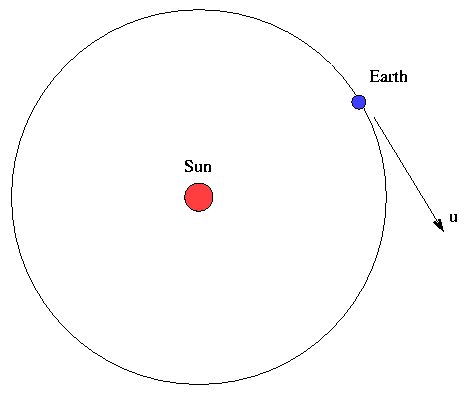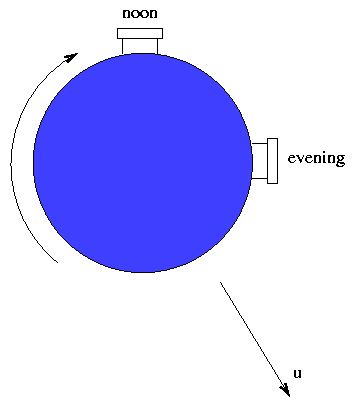
 Copyright © Michael Richmond.
This work is licensed under a Creative Commons License.
Copyright © Michael Richmond.
This work is licensed under a Creative Commons License.

In the Michelson-Morley experiment, a light beam takes the place of a swimmer. The light beam moves at roughly v = 3 x 10^8 m/s. The flow of the river is replaced by the motion of the Earth through the luminiferous ether. As the Earth orbits the Sun, it moves at a speed of roughly u = 30 km/sec.
Now, it just might happen that at some particular point in time, the stone table carrying the mirrors might be oriented perpendicular to the Earth's motion around the Sun; that is, the direction of the Earth's motion might happen to be vertically up or down through the tabletop. In that case, neither light beam would be travelling with and then against the Earth's motion, so one would see no interference.

However, if one waits 6 hours, the Earth will turn on its axis by 90 degrees, carrying the stone table with it. If the Earth's velocity was perpendicular to the table at noon, it cannot be around 6 PM. So if one performs the experiment at these two times, one must see a shift in the fringes at least once.
Or must one?
 Copyright © Michael Richmond.
This work is licensed under a Creative Commons License.
Copyright © Michael Richmond.
This work is licensed under a Creative Commons License.